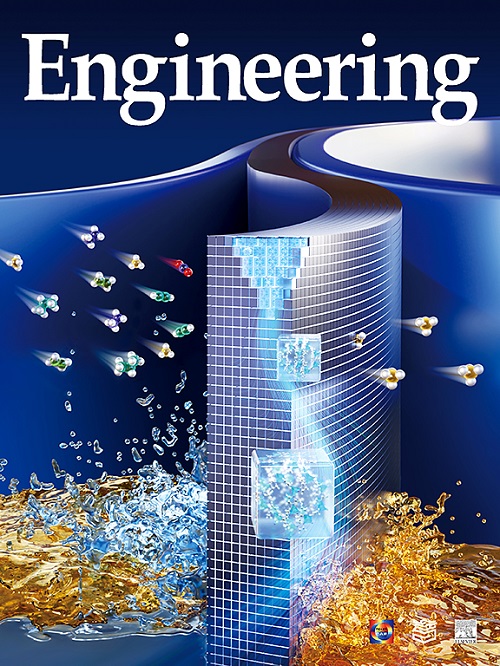Programmable Quasi-Zero-Stiffness Metamaterials
IF 10.1
1区 工程技术
Q1 ENGINEERING, MULTIDISCIPLINARY
引用次数: 0
Abstract
Quasi-zero-stiffness (QZS) metamaterials have attracted significant interest for application in low-frequency vibration isolation. However, previous work has been limited by the design mechanism of QZS metamaterials, as it is still difficult to achieve a simplified structure suitable for practical engineering applications. Here, we introduce a class of programmable QZS metamaterials and a novel design mechanism that address this long-standing difficulty. The proposed QZS metamaterials are formed by an array of representative unit cells (RUCs) with the expected QZS features, where the QZS features of the RUC are tailored by means of a structural bionic mechanism. In our experiments, we validate the QZS features exhibited by the RUCs, the programmable QZS behavior, and the potential promising applications of these programmable QZS metamaterials in low-frequency vibration isolation. The obtained results could inspire a new class of programmable QZS metamaterials for low-frequency vibration isolation in current and future mechanical and other engineering applications.
可编程准零刚度超材料
准零刚度(QZS)超材料在低频隔振中的应用引起了人们极大的兴趣。然而,以往的工作受到QZS超材料设计机制的限制,仍然难以实现适合实际工程应用的简化结构。在这里,我们介绍了一类可编程的QZS超材料和一种新的设计机制来解决这一长期存在的难题。提出的QZS超材料是由具有预期QZS特征的代表性单元细胞(RUCs)阵列组成的,其中RUC的QZS特征是通过结构仿生机制定制的。在实验中,我们验证了RUCs所表现出的QZS特征,可编程QZS行为,以及这些可编程QZS超材料在低频隔振中的潜在应用前景。所获得的结果可以在当前和未来的机械和其他工程应用中激发一类新的可编程QZS超材料用于低频隔振。
本文章由计算机程序翻译,如有差异,请以英文原文为准。
求助全文
约1分钟内获得全文
求助全文
来源期刊

Engineering
Environmental Science-Environmental Engineering
自引率
1.60%
发文量
335
审稿时长
35 days
期刊介绍:
Engineering, an international open-access journal initiated by the Chinese Academy of Engineering (CAE) in 2015, serves as a distinguished platform for disseminating cutting-edge advancements in engineering R&D, sharing major research outputs, and highlighting key achievements worldwide. The journal's objectives encompass reporting progress in engineering science, fostering discussions on hot topics, addressing areas of interest, challenges, and prospects in engineering development, while considering human and environmental well-being and ethics in engineering. It aims to inspire breakthroughs and innovations with profound economic and social significance, propelling them to advanced international standards and transforming them into a new productive force. Ultimately, this endeavor seeks to bring about positive changes globally, benefit humanity, and shape a new future.
 求助内容:
求助内容: 应助结果提醒方式:
应助结果提醒方式:


